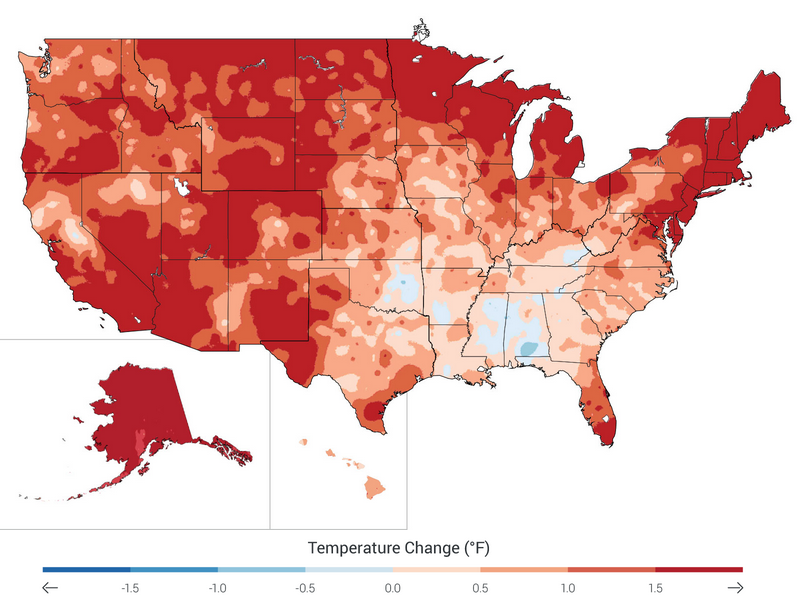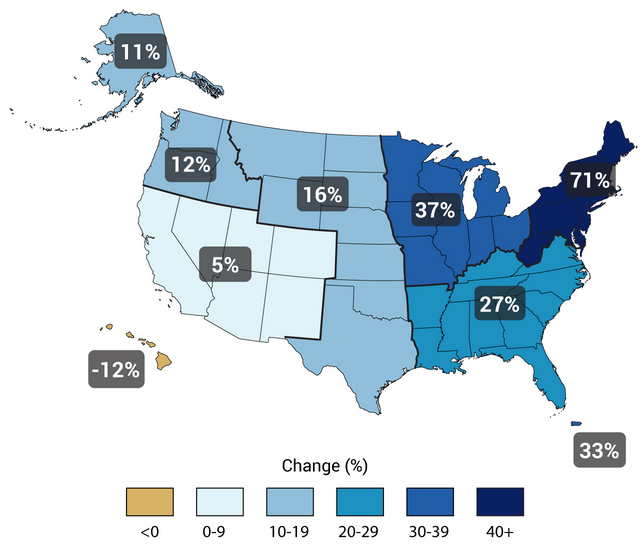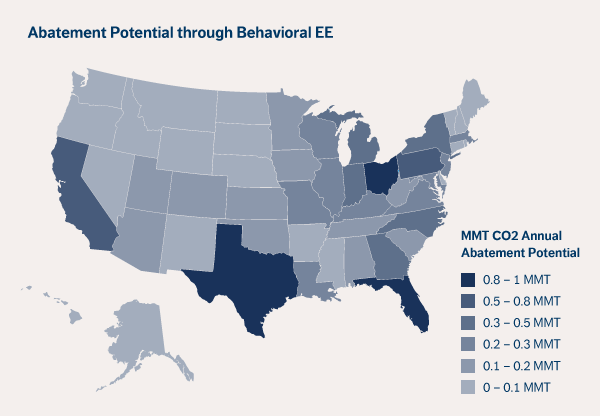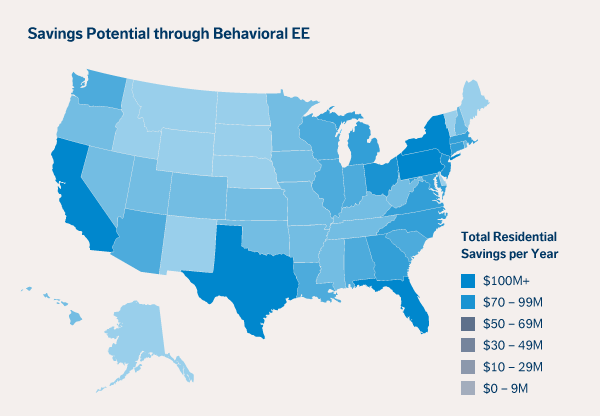May 14, 2014
4 maps on America’s climate and energy outlook: 2 that will worry you, 2 that will give you hope
Posted by kcompton
Originally posted on the Opower blog
On Tuesday, the White House released the most authoritative scientific report ever written about the current and future consequences of climate change in the United States.
The findings of the report, known as the National Climate Assessment (NCA), are striking. Average temperatures in the United States have increased by 1.3 to 1.9°F since 1895, and most of that warming has occurred in the last 40 years. The last decade was the hottest ever recorded in America.

Temperature changes in the United States from 1991-2012, relative to the 1901-1960 average for the lower 48 states and the 1951-1980 average for Alaska and Hawai’i. In the U.S., 7 of the 10 warmest years on record have occurred since 1998. (Source: Third U.S. National Climate Assessment, NOAA NCDC / CICS-NC.)
With temperatures on the rise, the report notes that extreme weather events are coming faster and stronger. The most recent round of prolonged heat waves in places like Texas and the Midwest were more intense than any on record, and the West’s ongoing drought appears to have created the driest conditions there in 800 years. As a result, the risk of serious wildfires is up. Meanwhile, downpours in the eastern half of the country are more than 30 percent heavier than they used to be, raising the risk of severe floods.

From 1958 to 2012, the Northeast, Midwest, Southeast, and Great Plains states have seen dramatic increases in the amount of precipitation during severe storms. The National Climate Assessment says these trends are unlikely to be explained by natural variations. (Source: Third U.S. National Climate Assessment.)
For policymakers and energy producers, the NCA underscores the pressing need for climate solutions, including more clean energy and stronger emissions standards. For the rest of us — as companies, communities, and individuals — the report is a reminder that the decisions we make every day have lasting impacts on our planet.
Increasing America’s energy efficiency, according to the NCA, stands out as a core solution to climate change: “The capacity for [climate] mitigation from individual and household behavioral changes, such as increasing energy end-use efficiency with available technology, is known to be large.”
Opower ran the numbers last year to find out exactly how large. One of our key findings: 10 million metric tons of carbon dioxide could be abated every year by helping families and businesses make smart behavioral changes that save energy.
When people save energy and cut carbon, they also save money. Deploying behavioral energy efficiency programs nationwide could knock $2.2 billion off our utility bills and put it right back into consumers’ pockets.
The last two maps look a lot better than the first two. And they highlight that like clean energy and emissions standards, behavioral energy efficiency is a proven, cost-effective strategy to mitigate climate change. Now it’s up to all of us to realize its full potential.
You can see the full National Climate Assessment here. To learn more about how behavioral energy efficiency can cut carbon emissions at home and abroad, click here.
Opower combines a cloud-based platform, big data, and behavioral science to help utilities around the world reduce energy consumption and improve their relationship with their customers. This helps consumers lower their energy use and costs, and significantly reduces carbon emissions. Opower is transforming the way the world approaches household energy conservation.
Richard Caperton, the Director of National Policy and Partnerships at Opower, will speak at this year’s AGU Science Policy Conference in June. Caperton leads the company’s engagement with all branches of the federal government, including Congress, the Environmental Protection Agency, Department of Energy, and Federal Energy Regulatory Commission.




It’s time to wise up to the propaganda of the oil and other dirty energy comapies… Renewable energy sources are more than on par with the dirty ones.. Not least taking into account that fossil fuels are subsidized 6 times greater than cle…an renewable technologies..
http://ecowatch.com/2014/05/08/albertas-tar-sands-make-neither-economic-climate-sense/
The numbers are in and they stand up for themselves.. Record wind power generation in Europe lowering the cost of energy for it’s citizens and keeping revenue in local economies!.. Denmark generating over 33% of it’s power for the entire year from wind! Portugal, Spain and Ireland generating 18% or better of their energy for the entire year from wind! Germany the largest economy in Europe generated over 10% of it’s electricity for the year from wind!
Why not here in North America?
Uncooperative political leaders.. The fact that the Production Tax Credit (PTC) was let lapse demonstrates unreliable policy for fostering clean renewable energy projects.
We need to fix this now, not later….
http://ecowatch.com/2014/01/16/wind-energy-records-europe/
This study shows the great lakes area to have excellent wind energy resources now and in the future. This will make for efficient use of the wind energy as there are many large metropolitan area’s on the shores of the great lakes. Transmission line losses will be minimal.
http://www.winddaily.com/reports/Global_warming_wont_harm_wind_energy_production_climate_models_predict_999.html
[…] The Bridge (AGU Blogosphere) – 4 maps on America’s climate and energy outlook: 2 that will worry you, 2 that will give you hope […]